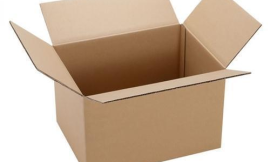The most notable features of plastic jars are inertness, impermeability, durability, and marketing potential. Learn about each one to choose the suitable container for your needs. These containers are widely used today and offer a host of benefits for packaging. Read on to discover how plastic jars are perfect for different uses and marketing potentials. If you are not convinced yet, read on to learn more. The best plastic pots are perfect for many types of packaging.

Inertness
One reason to use inert containers for storing foods is to reduce exposure to chemicals. Chemical migration occurs if the plastic that is used is porous. Inert materials, such as glass or stainless steel, are less likely to absorb these chemicals into the food. Another consideration is the type of food you are storing. For example, foods high in fats or acidity may be better stored in non-reactive containers.
Many plastics are inert, but they’re not inert. Even the most inert plastics contain some chemicals. Because they aren’t tightly bound to the material, they can leach away. Even when you don’t know they’re lethargic, plastics can leach chemicals if exposed to heat or air. This can be problematic for people who are allergic to certain chemicals.
Impermeability
There’s a debate about the impermeability of plastic jars. Some studies claim that the plastics in these bottles are responsible for causing cancer. Others say that plastic water bottles are safer than glass bottles. But is this true? The science behind these bottles is murky, and it’s not clear if they actually do cause cancer. So which is better? Here are some tips on how to tell if your plastic bottle is good or bad.
Glass jars are considered to be the best choice for liquid pharmaceuticals due to their impermeability and inert protective qualities. Glass is the only FDA-approved packaging material that doesn’t leach unwanted chemicals into liquid medications. But that was before a recent wave of recalls caused by poorly-made glass delaminating. Plastic is slowly replacing glass as the most popular choice for pharmaceutical packaging. However, it is also more expensive, fragile, and lightweight.
Durability
Plastics are made of long chains of synthetic molecules. They can be divided into two types: thermoplastics and thermosets. The former is set in stone, while the latter can be molded into different shapes and sizes. These chains are composed of several shorter ones called monomers, which are usually petroleum-derived, such as ethylene. The carbon-to-carbon bonds that hold these long molecules together are what make them so durable and non-degradable.
These properties make plastic bottles a great material for construction. They are cheap, lightweight, and durable. The popularity of plastic bottles has exploded in recent decades, but this reliance on this material has negative environmental effects. End-of-life plastics often end up in landfills and affect natural habitats. Recycling post-consumer plastic bottles can reduce waste and oil use and contribute to sustainable development. Several methods are available for recycling post-consumer plastic bottles.
Marketing potential
The plastic jar packaging market is dominated by the Asia-Pacific region, particularly in terms of revenue and market share. This is primarily due to the rising usage of plastic jars in personal care and healthcare. Meanwhile, North America and Western Europe are projected to grow at the fastest rates over the next few years. The key players in the plastic jar packaging market are Berry Global Inc., Alpha Packaging, Cospak, REPACK, Amcor plc, and Taral Plastics.
The plastic jar packaging market is anticipated to grow over the coming years, owing to the increasing popularity of flexible plastics in different sectors. Increasing consumer awareness of these products is also a key factor driving the market growth. In addition, rising disposable income levels, growing urbanization, and the increasing use of processed foods will also spur market growth. Meanwhile, stringent government regulations and rising technological advancements will cushion market growth. Overall, the market for plastic jar packaging will grow at a moderate pace in the coming years.




